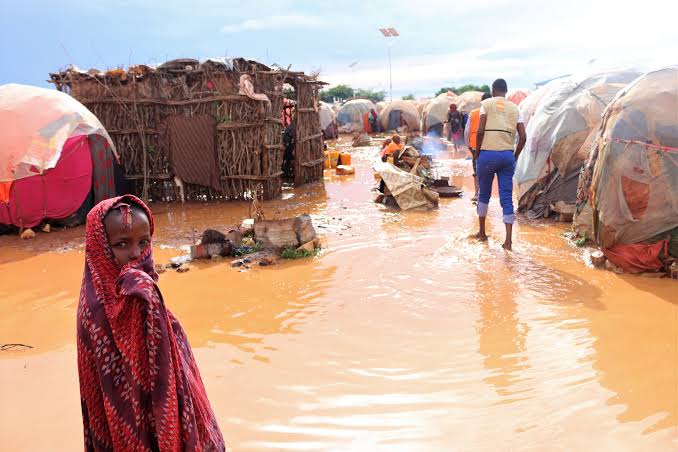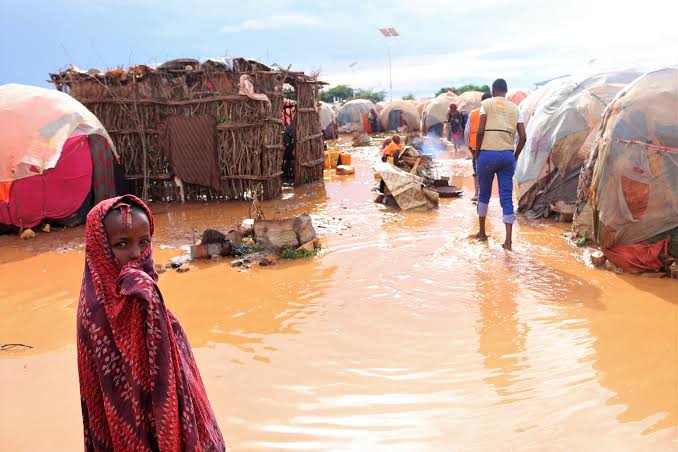
Faith Nyasuguta
Floods have caused some quarter of a million people to flee their homes after the Shabelle river in Central Somalia broke its banks and submerged the town of Beledweyne, even as the country faces its most severe drought in four decades, according to the government.
Aid agencies and scientists have cautioned that climate change is among the key factors accelerating humanitarian emergencies, while those impacted are some of the least responsible for CO2 emissions.
Local residents said seasonal rains in Somalia and upstream in the Ethiopian highlands triggered flash floods that washed away homes, crops, and livestock, and temporarily closed schools and hospitals in Beledweyne, the capital of Hiraan region.
“At once the entire city was underwater. Beledweyne itself became like an ocean,” said shopkeeper Ahmed Nur, whose business was washed away.
“Only the roofs of the houses could be seen. We used small boats and tractors to rescue people,” he said.

Nur has been staying with relatives on the edge of the city which, just weeks earlier, had been celebrating the end of the crippling drought.
“Rain came, we were happy. People planted their crops,” he said.
The drought, coupled with violence and a spike in food prices caused by the war in Ukraine, killed as many as 43,000 people last year, according to United Nations figures.
Since mid-March the floods have affected more 460,000 nationwide and killed 22, according to the UN humanitarian Office for the Coordination of Humanitarian Affairs (OCHA).
The Somali Disaster Management Agency said the floods in Beledweyne alone have caused the displacement of more than 245,000 people.
“Recovery from six consecutive seasons of poor rainfall performance will take time,” OCHA said in a May 14 report.
“The rains are recharging water sources and enabling vegetation to regenerate, however, it will take much more rainfall to effectively alleviate the impact of the recent drought,” OCHA said in a report.

After back-to-back disasters, at least one resident of Beledweyne, Halima Abdullahi, said she had seen enough, making her one of the 216 million people the World Bank predicts could be compelled to move within their own country by 2050 because of climate stress.
“We shall move to villages far away. Beledweyne no longer exists,” said the mother of two children.




